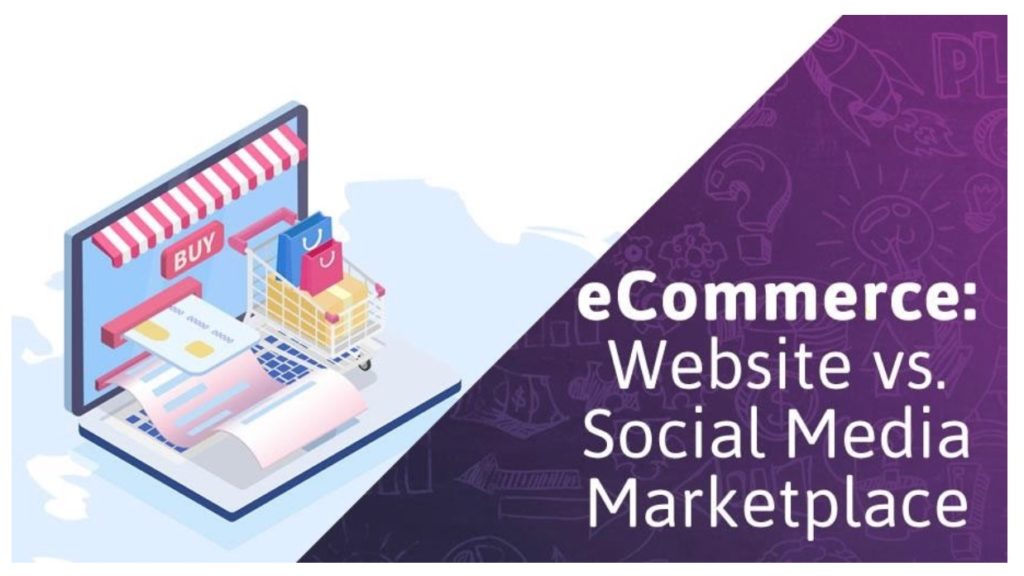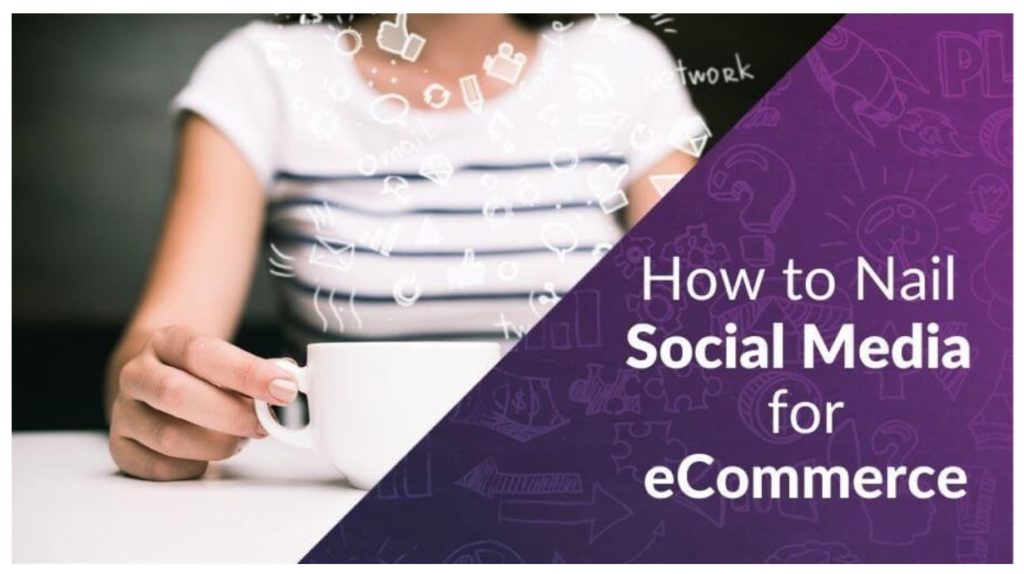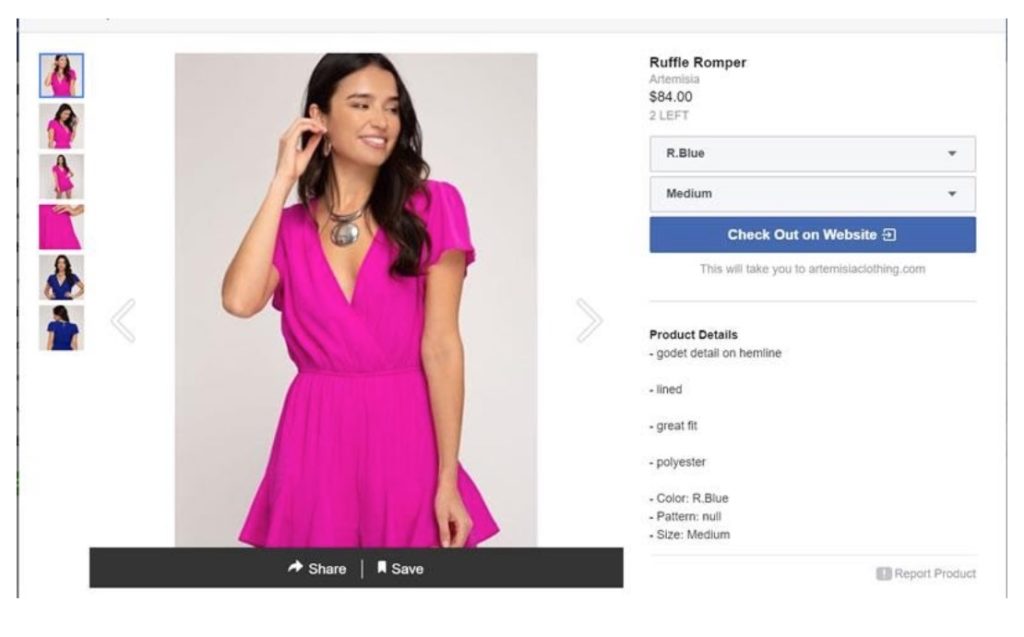Business
Selling on an eCommerce Site vs. a Social Media Marketplace
While there are important differences between selling on a social media marketplace or in your own eCommerce store, there are some similarities in how you should approach things. If you’re selling on an eCommerce store, you can use content marketing and paid ads to drive traffic to your products or services. Here are four tips to selling using a third-party platform or on an eCommerce website.

Over the past few weeks, I’ve shared some tips on improving your eCommerce website as well as some of the different ways to sell on social. This week, I’m going to help you choose whether you should focus on selling on an eCommerce store or opt for a social media marketplace.

But first, a quick refresher:
- Selling on an eCommerce store means you’re selling products or services on your own domain. You’re responsible for everything from web design to creating compelling content and managing SEO.
- Selling within a social media platform or marketplace involves utilizing the platform’s selling capabilities to actively market your products. Generally, if someone clicks, they’re driven back to your website to complete the purchase.
You’ll have to figure out how to process transactions either way and install shopping cart software or drive buyers to a third-party site like PayPal.
Here are some of the marketplaces you can sell on:
- Facebook Shops: Allows you to add products in different categories, communicate with customers and get insights around data.
- Facebook Messenger: While still a part of Facebook, this involves communicating with customers (either manually or with chatbots) to reach your target audience.
- Shoppable Instagram posts: You can tag brands and products in organic Instagram posts, then your audience can tap to see more details and buy the product.
- Pinterest (stats show that nearly half of all users are logging onto the site just to shop).

The differences between selling on an eCommerce Store & Social Media Marketplace
Now, if you’re selling on an eCommerce store, you can use a combo of SEO, content marketing and paid ads to drive traffic to your products or services. Because you can use your branding and content to your advantage, this can offer a more authentic experience to your customers.
If you’re using an online marketplace, it’s less time-consuming. The platform is already there, and you’re populating it with your images, copy and products/services. It may be easier for some small business owners to engage with their audience on a site like Facebook, Pinterest or Instagram vs. growing visitors to their website organically.
However, the competition is high. You’re competing against many other brands, both big and small. Your company could get lost in the noise, so to speak.
You’ll also often pay a fee to sell. For example, the selling fee on Facebook Shops is 5% per shipment, or a flat fee of $0.40 for shipments of $8.00 or less.
So what’s a small business owner to do?
~~~~~~~~~~
READ: Your Guide to eCommerce Social Media Marketing

Your social media accounts aren’t just platforms for sharing content and engaging with visitors to accomplish those goals. From Facebook to Instagram, it can be a powerful way to market your products and services to your followers.
But despite these statistics, many small business owners still don’t understand the value of using these popular platforms to sell. That’s why I created this guide: to not only help you understand how important eCommerce social media marketing is, but to give you actionable tips to drive traffic, leads and sales.
Read more on our website.
~~~~~~~~
Sell on eCommerce first & Social Media second
I recommend you start out with a website that allows people to buy what you’re selling on your own site. Then, as part of a bigger strategy, if it makes sense to your target audience, you can use a service like Facebook Shops to increase the size of your audience.
I don’t advise you to only sell on a third-party platform. Here’s why:
- You have far less control over technical issues. If something breaks or the service goes down, it could create a negative experience for your customers—and you may not even know it.
- If you are having a technical difficulty or issue with your online store, you’ll have to connect with the site’s third-party customer support vs. contacting your web development company.
- There can be marketplace limitations around how your business can brand itself. Your own site allows you complete control over the visuals, content, coding, videos and of course, SEO.

4 tips for selling on eCommerce or on a Social Media Marketplace
While there are some important differences between selling on a third-party platform or on your own eCommerce store, there are some similarities in how you should approach things.
- Build, don’t push.
Focus on building relationships, not pushing your products or services on people. You’ll have to spend time nurturing relationships and growing engagement, whether that’s through in-depth blog articles on your site or replying to comments on Facebook.
- Know your customers.
There are so many questions that can help you understand your buyers. Who’s your target audience? What networks are they active on? Do they leave reviews? Do they prefer to consume video content or written content?
- Understand your website weaknesses.
You’re driving potential customers to your site, so make sure it’s at its best. If traffic isn’t converting into leads or sales, it might not be your paid ads or product images.
Check your CTAs, look for broken links and take a long, hard look at your navigation. Also, check your Google Analytics data to learn what’s working and what isn’t.
- Listen to your customers.
Whether you’re selling on social media or through your website, your reputation depends on how you treat your customers. Monitor your comments, answer questions and complaints promptly and keep tabs on online reviews on sites like Google My Business and Yelp.
So there you have it: if you can, take both approaches to connecting with your target audience! These two tactics can really complement each other and be a key part of your multi-channel marketing strategy.
However, there’s more to the process than buying a domain name and loading your site with products or services or creating a profile on a social media marketplace. Hiring a professional marketing company can save you both time and money.
—
(Featured image by mohamed hassan via Pixabay)
DISCLAIMER: This article was written by a third party contributor and does not reflect the opinion of Born2Invest, its management, staff or its associates. Please review our disclaimer for more information.
This article may include forward-looking statements. These forward-looking statements generally are identified by the words “believe,” “project,” “estimate,” “become,” “plan,” “will,” and similar expressions. These forward-looking statements involve known and unknown risks as well as uncertainties, including those discussed in the following cautionary statements and elsewhere in this article and on this site. Although the Company may believe that its expectations are based on reasonable assumptions, the actual results that the Company may achieve may differ materially from any forward-looking statements, which reflect the opinions of the management of the Company only as of the date hereof. Additionally, please make sure to read these important disclosures.

-

 Business7 days ago
Business7 days agoTopRanked.io Weekly Affiliate Digest: What’s Hot in Affiliate Marketing [1xBet + FIFA World Cup]
-

 Business2 weeks ago
Business2 weeks agoThe TopRanked.io Weekly Digest: What’s Hot in Affiliate Marketing [K4G Affiliates Review]
-

 Crypto2 days ago
Crypto2 days agoBitMine Surpasses 4 Million ETH Holdings Amid Market Volatility
-

 Crypto1 week ago
Crypto1 week agoTether Targets $500 Billion Valuation in Landmark Funding Push

















